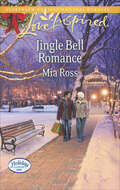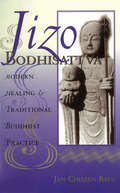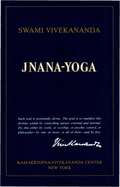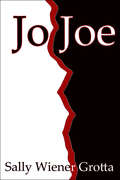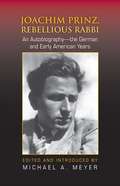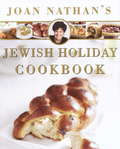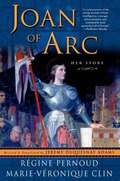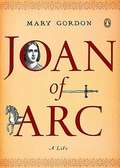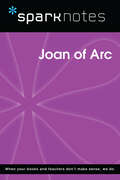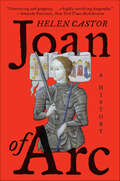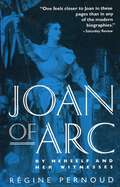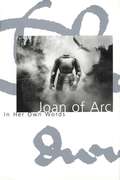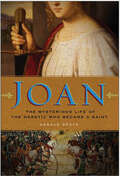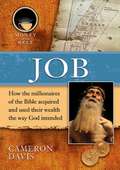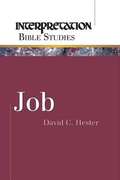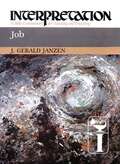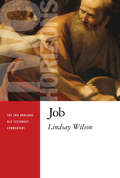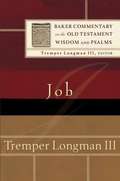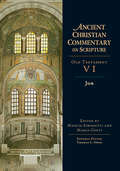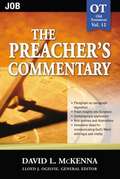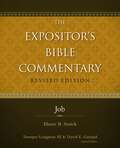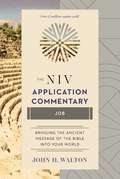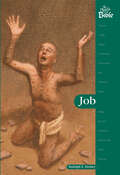- Table View
- List View
Jingle Bell Romance (Holiday Harbor #2)
by Mia RossFalling For Scrooge Julia Stanton loves Christmas-almost as much as she loves the home she's made in Holiday Harbor. So when her beloved pastor's prodigal son returns for a brief visit, she hatches a plan to keep Nick McHenry in town. Growing up as an ambassador's daughter, she's charmed countless dignitaries and surely she can get the brooding bachelor to see how much joy there is in a family-filled holiday. Julia never expects to feel the spark of something more for Nick. But it will take more than attraction to turn this handsome scrooge into her hometown hero. Holiday Harbor: Where love is just around the bend.
Jizo Bodhisattva
by Jan Chozen BaysJizo Bodhisattva is an important saint of the Mahayana Buddhist tradition, and is most prominent in Japanese Zen Buddhism. This book helps readers understand how this Buddhist saint of travellers, children and the dead can help people confront suffering. Accompanied with beautiful black and white photographs and illustrations, Bays writes for those who are grieving, those who have lost loved ones, or anyone with an interest in Buddhism or Zen.
Jnana-Yoga
by Swami Vivekananda Swami NikhilanandaJnana Yoga describes the wisdom of the Vedas, the Upanishads, and the Bhagavad Gita in the scientific manner of modern times. "Each soul is potentially divine. The goal is to manifest this divinity within by controlling nature: external and internal. Do this either by work, or worship, or psychic control, or philosophy -- by one, or more, or all of these -- and be free."
Jo Joe: a Black Bear, Pennsylvania story
by Sally Wiener GrottaAs a child, Judith Ormand was the only Jew -- and the only Black -- in a small insular Pennsylvania mountain village where she was raised by her white Christian grandparents. Now, she must reluctantly break her vow to never return to the town she learned to hate. During her one week visit, she buries and mourns her beloved grandmother, is forced to deal with the white boy who cruelly broke her heart, and is menaced by an old bully who threatens worse. But with her traumatic discovery of a long buried secret, Judith finds more questions than answers about the prejudice that scarred her childhood. A free Study Guide for Jo Joe, for book clubs, teachers and other book discussion groups is available from the publisher Pixel Hall Press.About Black Bear, PennsylvaniaJo Joe.is set in the fictional Pocono Mountains village of Black Bear, Pennsylvania. Black Bear was created as a literary folie à deux by Daniel Grotta and Sally Wiener Grotta. Both Daniel and Sally are dipping into the same pool of invented locale and characters to write a series of separate stories and novels that will eventually paint a full picture of the diversity of life and relationships in a small mountain village. However, every Black Bear story stands alone, as a separate story that doesn't require knowing anything about the town from previous stories. The first Black Bear story was Honor a novella by Daniel Grotta. Both Jeff Smith and his curmudgeonly father-in-law AH Engelhardt from Honor, play key roles in Jo Joe. Daniel Grotta's novel Black Bear One, about the adventures, foibles and complicated relationships of the town's volunteer ambulance corps, will be published in 2015. Members of the ambulance crew include Jeff Smith from Honor and Joe Anderson and Rabbi David of Jo Joe.
Joachim Prinz, Rebellious Rabbi: An Autobiography--the German and Early American Years
by Michael A. MeyerJoachim Prinz (1902-1988) was one of the most extraordinary and innovative figures in modern Jewish history. Never one for conformity, Prinz developed and modeled a new rabbinical role that set him apart from his colleagues in Weimar Germany. Provocative, strikingly informal and determinedly anti-establishment, he repeatedly stirred up controversy. During the Hitler years, Prinz strove to preserve the self-respect and dignity of a Jewish community that was vilified on a daily basis by Nazi propaganda. After immigrating to the United States in 1937, he soon became a prominent rabbi in New Jersey, drawing thousands to his unpredictable sermons. Prinz's autobiography, superbly introduced and annotated by Michael A. Meyer, offers a fascinating glimpse into the life and personality of this unconventional and influential rabbi.
Joan Nathan's Jewish Holiday Cookbook
by Joan NathanJewish holidays are defined by food. Yet Jewish cooking is always changing, encompassing the flavors of the world, embracing local culinary traditions of every place in which Jews have lived and adapting them to Jewish observance. This collection, the culmination of Joan Nathan's decades of gathering Jewish recipes from around the world, is a tour through the Jewish holidays as told in food. For each holiday, Nathan presents menus from different cuisines--Moroccan, Russian, German, and contemporary American are just a few--that show how the traditions of Jewish food have taken on new forms around the world. There are dishes that you will remember from your mother's table and dishes that go back to the Second Temple, family recipes that you thought were lost and other families' recipes that you have yet to discover. Explaining their origins and the holidays that have shaped them, Nathan spices these delicious recipes with delightful stories about the people who have kept these traditions alive. Try something exotic--Algerian Chicken Tagine with Quinces or Seven-Fruit Haroset from Surinam--or rediscover an American favorite like Pineapple Noodle Kugel or Charlestonian Broth with "Soup Bunch" and Matzah Balls. No matter what you select, this essential book, which combines and updates Nathan's classic cookbooks The Jewish Holiday Baker and The Jewish Holiday Kitchen with a new generation of recipes, will bring the rich variety and heritage of Jewish cooking to your table on the holidays and throughout the year.
Joan Of Arc: Her Story
by Jeremy DuQuesnay Adams Regine Pernoud Marie-Veronique Clin Narue-Veronique ClinThe peasant girl who led an army against the English and placed Charles VII on the French throne has inspired countless books since her death at age 19. While others have claimed Joan the Maid (as she called herself) for every cause from feminism to working-class radicalism, this meticulous volume by two French scholars sticks close to the known facts. The authors make extensive use of contemporary documents that bring to life the turbulent political scene in which Joan operated as well as her forceful personality. Joan followed the directives of voices she believed were sent to her by God; her deep piety, self-assurance, decisiveness, and shrewd intelligence radiate from her letters and from her responses to hostile questioning at the rigged trial that resulted in her being burned alive as a heretic in 1431. General readers may be intimidated at first by a detailed narrative studded with lengthy quotations, but those who persevere will discover a story all the more moving because it is not manipulated to make a modern-day point. This English translation updates the 1986 French volume's bibliography, supplements the biographies in part 2 with sketches of historical figures less familiar outside of France, and generally makes the book more accessible for English-language readers. --Wendy Smith.
Joan Soldado
by Paul J. VanderwoodPaul J. Vanderwood offers a fascinating look at the events, beliefs, and circumstances that have motivated popular devotion to Juan Soldado, a Mexican folk saint. In his mortal incarnation, Juan Soldado was Juan Castillo Morales, a twenty-four-year-old soldier convicted of and quickly executed for the rape and murder of eight-year-old Olga Camacho in Tijuana in 1938. Immediately after Morales's death, many people began to doubt the evidence of his guilt, or at least the justice of his brutal execution. People reported seeing blood seeping from his grave and hearing his soul cry out protesting his innocence. Soon the "martyred" Morales was known as Juan Soldado, or John the Soldier. Believing that those who have died unjustly sit closest to God, people began visiting Morales's grave asking for favors. Within months of his death, the young soldier had become a popular saint. He is not recognized by the Catholic Church, yet thousands of people have made pilgrimages to his gravesite. While Juan Soldado is well known in Tijuana, southern California's Mexican American community, and beyond, this book is the first to situate his story within a broader exploration of how and why popular canonizations such as his take root and flourish. In addition to conducting extensive archival research, Vanderwood interviewed central actors in the events of 1938, including Olga Camacho's mother, citizens who rioted to demand Morales's release to a lynch mob, those who witnessed his execution, and some of the earliest believers in his miraculous powers. Vanderwood also interviewed many present-day visitors to the shrine at Morales's grave. He describes them, their petitions--for favors such as health, a good marriage, or safe passage into the United States--and how they reconcile their belief in Juan Soldado with their Catholicism. Vanderwood puts the events of 1938 within the context of Depression-era Tijuana and he locates people's devotion, then and now, within the history of extra-institutional religious activity. In Juan Soldado, a gripping true-crime mystery opens up into a much larger and more elusive mystery of faith and belief.
Joan of Arc
by Mary GordonJoan of Arc was born in 1412 and grew up during a time of invasion and civil war. At thirteen, she began to hear the voices of saints and followed their directives, believing they were sent to her by God. At seventeen, she rode into battle to rescue France from English domination in the Hundred Years War and in 1431, aged only nineteen, she was put on trial for heresy and sorcery by an ecclesiastical court of the Inquisition, and burned at the stake. Joan radiated with deep piety, self-assurance, decisiveness, and shrewd intelligence as her responses to hostile questioning preserved in the records of the rigged trial demonstrate. In this glittering portrait of the illiterate peasant girl who became the saviour of France, Joan of Arc's energy, spirit and her heroism as the first to die for a Christian-inspired idea of nationalism, are beautifully portrayed.
Joan of Arc (SparkNotes Biography Guide)
by SparkNotesJoan of Arc (SparkNotes Biography Guide) Making the reading experience fun! SparkNotes Biography Guides examine the lives of historical luminaries, from Alexander the Great to Virginia Woolf. Each biography guide includes:An examination of the historical context in which the person lived A summary of the person&’s life and achievements A glossary of important terms, people, and events An in-depth look at the key epochs in the person&’s career Study questions and essay topics A review test Suggestions for further reading Whether you&’re a student of history or just a student cramming for a history exam, SparkNotes Biography guides are a reliable, thorough, and readable resource.
Joan of Arc: A History
by Helen CastorFrom the author of the acclaimed She-Wolves, the complex, surprising, and engaging story of one of the most remarkable women of the medieval world—as never told before.Helen Castor tells afresh the gripping story of the peasant girl from Domremy who hears voices from God, leads the French army to victory, is burned at the stake for heresy, and eventually becomes a saint. But unlike the traditional narrative, a story already shaped by the knowledge of what Joan would become and told in hindsight, Castor’s Joan of Arc: A History takes us back to fifteenth century France and tells the story forwards. Instead of an icon, she gives us a living, breathing woman confronting the challenges of faith and doubt, a roaring girl who, in fighting the English, was also taking sides in a bloody civil war. We meet this extraordinary girl amid the tumultuous events of her extraordinary world where no one—not Joan herself, nor the people around her—princes, bishops, soldiers, or peasants—knew what would happen next.Adding complexity, depth, and fresh insight into Joan’s life, and placing her actions in the context of the larger political and religious conflicts of fifteenth century France, Joan of Arc: A History is history at its finest and a surprising new portrait of this remarkable woman.Joan of Arc: A History features an 8-page color insert.
Joan of Arc: By Herself and Her Witnesses
by Regine PernoudUsing historical documents and translated by Régine Pernoud, Joan of Arc seeks to answer the questions asked by Joan's contemporaries as well as us: Who was she? Whence came she? What had been her life and exploits? First published in the United States in 1966 by Stein and Day, this book reveals the historical Joan, described in contemporary documents by her allies as well as her enemies.
Joan of Arc: In Her Own Words
by Joan Of Arc Willard TraskThe only available source for the exact words of Joan of Arc, compiled from the transcript of her trials and rearranged as an autobiography by Willard Trask.
Joan: The Mysterious Life of the Heretic Who Became a Saint
by Donald Spoto“A fresh and definitive biography in the context of Joan of Arc’s times.” — International Herald Tribune“Donald Spoto is one of the best biographers in the world today. “ — Acclaimed biographer Mary S. Lovell, author of the national bestselling The Sisters: The Saga of the Mitford Family“A magnificent introduction to one of the most misunderstood and controversial of all the saints.” — James Martin, SJ, editor of America Magazine, author of My Life With the Saints“A worthy contribution to a renewed understanding of a figure who still speaks to today’s realities.” — Library Journal“[An] engaging, and at times gripping, biography.” — Publishers Weekly (starred review)“I have never read a biography that affected me so deeply as a Catholic or as a woman.” — Sr. Joan Chittister, author of Called to Question and columnist for The National Catholic Reporter“Thought provoking and very readable… Joan’s story is significant and should be retold….” — United Press International“…a lively, accessible book …with a cogent discussion of faith, mystery and early church politics.” — Washington Times“[Spoto] approaches his subject with the sophistication of a historian and the admiration of a true believer.” — Washington Post“Spoto is a surprisingly apt biographer for [Joan] ….” — Slate“Spoto’s new biography is like bringing reality TV into a 15th century courtroom . . .a stunning miscarriage of justice.” — Denver Post
Job
by Cameron DavisWhy do innocent people suffer? This is the universal question posed in the story of Job. Blessed with great wealth and a loving family, Job was considered the richest man in the East-until the day that everything he had was taken away. But Job continued to praise God, even as he sought to understand the mystery of suffering and of God's divine grace.
Job
by David C. HesterIn this study, noted Old Testament scholar and Christian educator David Hester focuses on the difficult questions raised in Job: where is God in the worst moments of our emptiness? What are we to do when experience casts doubt on what we have always believed? Where in the world is justice? The author brings to this writing his own experience of suffering. His touching honesty provides a moving connection between the ancient text and the world of today, inviting us to join in Job's search for hope and healing. Interpretation Bible Studies (IBS) offers solid biblical content in a creative study format. Forged in the tradition of the celebrated Interpretation commentary series, IBS makes the same depth of biblical insight available in a dynamic, flexible, and user-friendly resource. Designed for adults and older youth, IBS can be used in small groups, in church school classes, in large group presentations, or in personal study.
Job
by J. Gerald JanzenIn this volume, J. Gerald Janzen examines the text of the book of Job as a literary text within the context of the history of the religion of Israel and within the broader context of the universal human condition. He approaches the basic character of the book from a literary perspective which enables him to identify human existence as exemplified in Job and to expound on the mystery of good and evil, which gives human existence its experiential texture and which together drive humans to ask the same kind of questions asked by Job. This is the first full-length commentary to present Job systematically and literarily. Interpretation: A Bible Commentary for Teaching and Preaching is a distinctive resource for those who interpret the Bible in the church. Planned and written specifically for teaching and preaching needs, this critically acclaimed biblical commentary is a major contribution to scholarship and ministry.
Job
by Lindsay WilsonIn this commentary Lindsay Wilson shows the book of Job to be a coherent literary work that addresses this question: Is it possible for humans to have genuine faith in God regardless of their circumstances? Wilson argues that Job’s bold, sometimes questioning cries to God are portrayed as legitimate expressions of trust for a righteous person in adversity. Through critical exegesis of the text, Wilson focuses on the message of Job and its implications for practical ministry, examining such key issues as suffering, justice, lament, and faith. He also touches on various pertinent topics in Christian ethics, including individual character, wealth, suicide, and the environment. In a final section Wilson offers guidance on using Job as a resource book for pastoral care and prayer, and he discusses how to teach and preach from the book of Job.
Job
by Steven ChaseThe book of Job, an enigmatic but powerful book in the Old Testament canon, raises universal questions about suffering and God's relationship to both the cause of the anguish and those who endure it. The ideas and questions of theodicy, divine justice, and divine power that arise and challenge Job's life still resonate with our lives today. Chase's commentary in the Belief series not only wrestles with the issues raised by the text, but it also probes the depths of spiritual theology in the book of Job.
Job
by Tremper Longman IIIA respected Old Testament scholar provides an exegetical commentary on Job with theological insights for pastors, professors, and all serious students of the Bible.
Job (Ancient Christian Commentary on Scripture #6)
by Marco Conti Manlio SimonettiThe book of Job presents its readers with a profound drama concerning innocent suffering. Such honest, forthright wrestling with evil and the silence of God has intrigued a wide range of readers, both religious and nonreligious. Surprisingly, the earliest fathers showed little interest in the book of Job. Not until Origen in the early third century is there much evidence of any systematic treatment of the book, and most of Origen's treatment is known to us only from the catenae. More intense interest came at the end of the fourth century and the beginning of the fifth. The excerpts in this collection focus on systematic treatment. Among Greek texts are those from Origen, Didymus the Blind, Julian the Arian, John Chrysostom, Hesychius of Jerusalem and Olympiodorus. Among Latin sources we find Julian of Eclanum, Philip the Priest and Gregory the Great. Among Syriac sources we find Ephrem the Syrian and Isho'dad of Merv, some of whose work is made available here for the first time in English. In store for readers of this volume is once again a great feast of wisdom from the ancient resources of the church.
Job (Preacher's Commentary, Volume #12)
by David L. MckennaGeneral editor Lloyd J. Ogilvie brings together a team of skilled and exceptional communicators to blend sound scholarship with life-related illustrations. The design for the Preacher's Commentary gives the reader an overall outline of each book of the Bible. Following the introduction, which reveals the author's approach and salient background on the book, each chapter of the commentary provides the Scripture to be exposited. The New King James Bible has been chosen for the Preacher's Commentary because it combines with integrity the beauty of language, underlying Hebrew and Greek textual basis, and thought-flow of the 1611 King James Version, while replacing obsolete verb forms and other archaisms with their everyday contemporary counterparts for greater readability. Reverence for God is preserved in the capitalization of all pronouns referring to the Father, Son, or Holy Spirit. Readers who are more comfortable with another translation can readily find the parallel passage by means of the chapter and verse reference at the end of each passage being exposited. The paragraphs of exposition combine fresh insights to the Scripture, application, rich illustrative material, and innovative ways of utilizing the vibrant truth for his or her own life and for the challenge of communicating it with vigor and vitality.
Job (The Expositor's Bible Commentary)
by Elmer B. SmickContinuing a Gold Medallion Award-winning legacy, the completely revised Expositor's Bible Commentary puts world-class biblical scholarship in your hands.A staple for students, teachers, and pastors worldwide, The Expositor's Bible Commentary (EBC) offers comprehensive yet succinct commentary from scholars committed to the authority of the Holy Scriptures. The EBC uses the New International Version of the Bible, but the contributors work from the original Hebrew and Greek languages and refer to other translations when useful.Each section of the commentary includes:An introduction: background information, a short bibliography, and an outlineAn overview of Scripture to illuminate the big pictureThe complete NIV textExtensive commentaryNotes on textual questions, key words, and conceptsReflections to give expanded thoughts on important issuesThe series features 56 contributors, who:Believe in the divine inspiration, complete trustworthiness, and full authority of the BibleHave demonstrated proficiency in the biblical book that is their specialtyAre committed to the church and the pastoral dimension of biblical interpretationRepresent geographical and denominational diversityUse a balanced and respectful approach toward marked differences of opinionWrite from an evangelical viewpointFor insightful exposition, thoughtful discussion, and ease of use—look no further than The Expositor's Bible Commentary.
Job (The NIV Application Commentary)
by John H. WaltonThe NIV Application Commentary helps you communicate and apply biblical text effectively in today's context.To bring the ancient messages of the Bible into today's world, each passage is treated in three sections:Original Meaning. Concise exegesis to help readers understand the original meaning of the biblical text in its historical, literary, and cultural context.Bridging Contexts. A bridge between the world of the Bible and the world of today, built by discerning what is timeless in the timely pages of the Bible.Contemporary Significance. This section identifies comparable situations to those faced in the Bible and explores relevant application of the biblical messages. The author alerts the readers of problems they may encounter when seeking to apply the passage and helps them think through the issues involved.This unique, award-winning commentary is the ideal resource for today's preachers, teachers, and serious students of the Bible, giving them the tools, ideas, and insights they need to communicate God's Word with the same powerful impact it had when it was first written.
Job (The People's Bible)
by Rudolph E HonseyWhat is the book of Job about? Who is Job in the Bible?Job is a literary masterpiece that tells the story of a man described as “blameless and upright” who “feared God and shunned evil.” Yet Job suffered horribly. He lost possessions, his health, even his dearly loved sons and daughters. In this book, God reminds believers that he sometimes sends suffering to test them. His faithful people patiently endure each trial and trust that God’s ways are far beyond the human ability to understand.Want to learn more? If you’re wondering what the book of Job is all about, this helpful resource is for you!Job is a reliable Bible commentary. It’s down to earth, clearly written, easy to read and understand, and filled with practical and modern applications to Scripture.It also includes the complete text of the book of Job from the NIV Bible. The Christ-centered commentaries following the Scripture sections contain explanations of the text, historical background, illustrations, and archaeological information. Job is a great resource for personal or group study!This book is a part of The People’s Bible series from Northwestern Publishing House.
